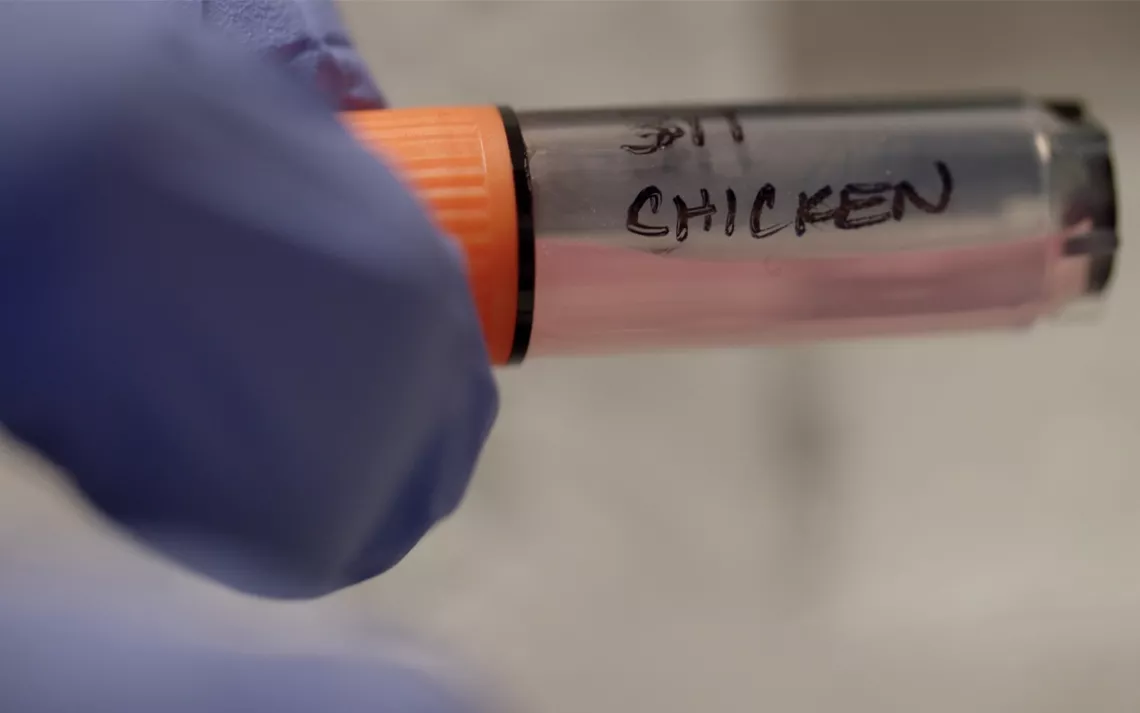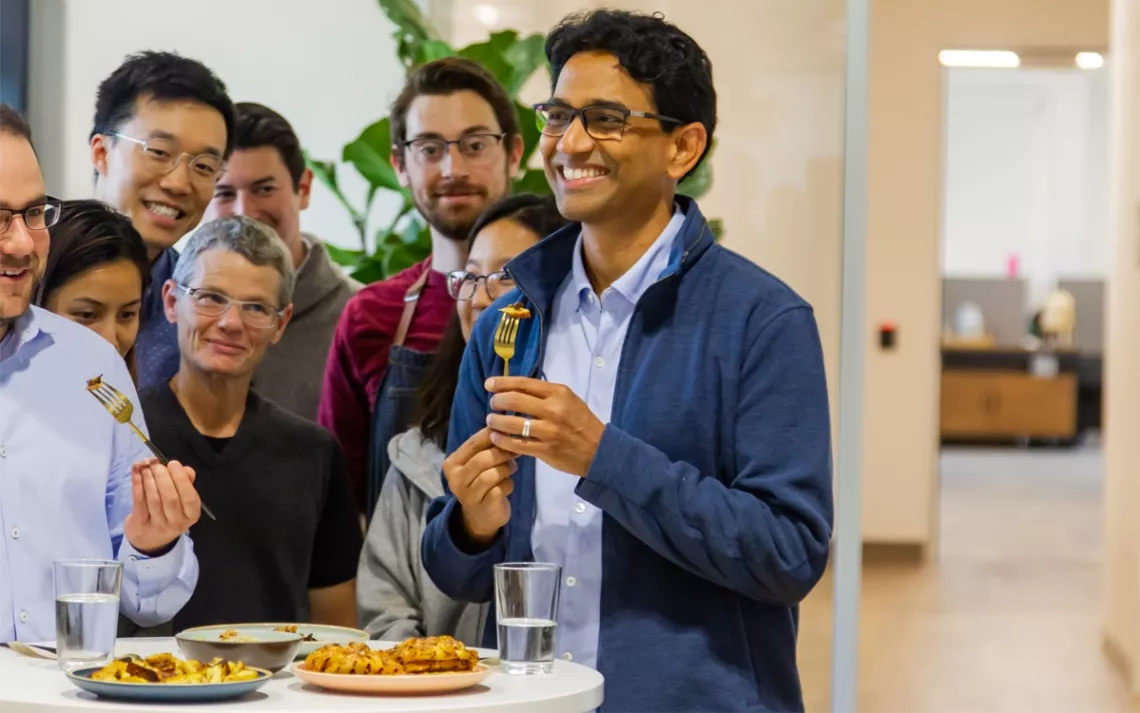“Meat the Future” Takes Viewers to the Meat-Growing Lab
The new documentary reveals what it means to cultivate meat from animal cells

Photos courtesy of Giant Pictures
According to the USDA, the average American consumed an estimated 144 pounds of meat in 2017. Although plant-based products have soared in popularity since hitting mainstream markets, it seems Americans are far from willing to give up meat entirely. Which is why a team of scientists at Upside Foods (formerly known as Memphis Meats) have set out to make cultivated meat the new norm.
In Meat the Future, streaming on most major platforms starting this week, we meet a team of scientists led by cardiac surgeon and regenerative medicine researcher Dr. Uma Valeti, as they sally forth on the quest to produce cultivated meat—typically referred to as “lab-grown,” “in vitro,” or “cell-cultured” meat—at an affordable cost. The 90-minute film, written and directed by Liz Marshall and narrated by none other than Dr. Jane Goodall, documents the hurdles scientists encounter in producing and introducing the world to meat made from animal cells in laboratories. Viewers witness as Valeti and his team face serious backlash from leaders in the cattle industry and the FDA itself for their attempts to revolutionize the way humans consume meat. The pressure is on as Valeti's team entices more sponsors to support their operation underway at Upside Foods. The more interest they spark from investors, however, the more hurdles they encounter from leaders in the cattle industry.
“We are not asking you to change your consumer habits. We want you to keep eating the meat you’ve always been eating,” Dr. Eric Schulze, vice president of production and regulation at Upside Foods, tells viewers in the film. “The cultivation process can help address climate change issues so that we can produce food more sustainably, and hope we win on taste.”
Throughout the documentary, Valeti and Schulze field questions about the process through which they culture animal cells to make a product that tastes like meat sold in stores. What initially seems like it could be a monotonous educational documentary instead takes viewers on a wild ride through the nuts and bolts of meat production—and meat semantics. For instance, several subjects in the film discuss how the phrase “clean meat,” favored by the cultivated lab meat sector, suggests that meat produced out of slaughter houses is in some way dirty. This question sparks an ongoing debate between cattle industry leaders (who also have a history of opposing the application of words like “meat” and “beef” to lab-grown meat) and members of Valeti’s team. Viewers are also privy to the team’s struggles to make cultivated meat affordable and accessible to everyone—a long road, considering the first meatball they produced cost $18,000 dollars. (By the end of the film, the price-per-pound of Upside Foods' cultivated meat amounts to well below $50 per pound.)

The film also touches on Valeti’s upbringing, attending a school in India where students were expected to produce their own food. Valeti describes how his motivation to produce what he calls “authentic meat” stemmed from seeing animals slaughtered firsthand as a child. In fact, Valeti claims he used to dream of meat growing from trees and that this is what inspired him to pursue the process of making cultivated meat (which he, for the record, prefers not to call “lab-grown meat”).
“We dig cells, whether it’s from a cow, a pig, or a chicken, and we pour them in rich nutrients. These cells grow and become meat tissue,” Valeti says in the film. Stressing that he and his team are “not cloning anything,” Valeti insists they are rather “growing these cells” to become muscle tissue. Scientists at Upside Foods perform punch biopsies, wherein a large needle is inserted into the animal and extracts a small cylinder of tissue. These small tissue samples do not harm the animals and produce hundreds of pounds of meat. One of the goals of Upside Foods is to eliminate any animal-derived product from the process as soon as possible. “We want to separate the animal from the meat-making,” Valeti states in the film. Cells are put into an artificial environment so they can grow and proliferate.
Meat the Future director Liz Marshall describes the documentary as “a story about the birth of an industry.” She told Sierra, “Our species, our human minds, and behaviors will adapt. Just in the same way we have adapted to other tremendous innovations that have transformed the world.”
Despite its science-heavy content, Meat the Future contains enough big ideas to sate viewers who aren’t necessarily steeped in animal or cell biology. It presents an alternative way of living—a way that doesn’t involve the killing of more than 100 million animals per year, a way of living that paves the way for an animal-free future where we still get to eat meat. This compelling film, in our opinion, has the potential to change the way Americans think about, consume, and make meat for years to come.
 The Magazine of The Sierra Club
The Magazine of The Sierra Club



